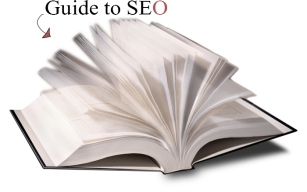
There are countless ways to try and adapt your website and its backlink profile in order to optimise for SEO and gain yourself healthy search engine rankings. But getting into Google’s good books is now an important part of SEO, and simply throwing in keywords and backlinks without a care is perhaps not such a good idea. Numerous SEO tactics have become slightly dubious as Google become more severe, and sorting out which ones to use and how to use them is essential.
SEO Tactics:
1) Page Titles
The title of a page heavily influences what keywords that page will rank for. Therefore, getting the page title right is very important. However, what’s the best tactic?
What not to do: It’s tempting to start throwing in a big list of keywords into your page titles in the hope that Google will then rank you for all those keywords. However, if it doesn’t look sensible, Google probably isn’t going to like it. A page title that goes on forever looks messy and poor quality and Google could quite possibly penalise you since they don’t want to display spammy looking results to searchers. Another spammy looking technique is to use the same words numerous times in the title. If you’re trying to optimise your website for a location like London, don’t say London a million times in the page title, one time is quite enough.
What to do: Although the perfect page title may be debatable, a good start is choosing one or two important short keyphrases, perhaps with a location attached, and using this for your page title. This page title should preferably fit on the screen in the SERPs, and if it doesn’t it is maybe a bit too long. The page title should relate closely to the content of the page is points to, and should be friendly to searchers as well as search engines.
2) Keyworded Links in Footers
There’s some debate over the value of keyworded links in a website’s footer. Placing links here can help site navigation and perhaps provide some SEO benefit, however footer links could be seen as low quality links to unimportant pages in some cases. Their value will depend on things like how many links there are, and whether they’re links to internal pages or whether they’re backlinks from external pages.
What not to do: Filling the footer with great long lists of keyworded links to your pages is most likely a bad idea. Long lists of links lower the importance of each individual link until they are just seen as a lot of spam and either ignored or penalised by Google. Also, it may be a mistake to generate a backlink profile that is made up of backlinks from website footers since these could be seen as low quality links by Google.
What to do: Use the footer wisely and reasonably sparingly with a few links and maybe some social media and contact information. When optimising for a specific location, using the location name in the contact details in the footer may be quite effective. Remember footers can vary across a website, making them a bit more interesting for the search engine and the searcher, and bear in mind you don’t even need a footer at all if you don’t want.
3) Article Submissions
Article submissions to websites such as EzineArticles and Goarticles are a slightly dubious SEO tactic, although they may well have some worth.
What not to do: Submitting the same article to millions of article directories is probably not going to be much better than submitting it to just one. Google recognises duplicate content and will take the original as the valuable piece of content, giving little credit to the duplicate content elsewhere. In addition, a poor quality article filled with promotional anchor text links could well be harmful to your website rather than beneficial.
What to do: The odd article submission to good quality article directories may well be beneficial. Make sure within these articles you only include a couple of links back to your website, and don’t overuse anchor text; a method which is somewhat scrutinised by Google since the Penguin update. As long as the articles are relevant to the content you’re linking to, unique, and good quality, then a few article submissions may be worthwhile. Although it is worth noting that Matt Cutts suggests leaning away from article marketing.
SEO Guide Part 1 Summed Up:
Since Google have become stricter, many SEO tactics are no longer effective. However, it is worth bearing in mind that old tactics are not necessarily useless, but rather they need to be refined in order to suit the new rules Google likes to lay down, and perhaps combined with other digital marketing techniques such as social media. Often, if it feels spammy or junky, it’s not going to work anymore, and these practices are best avoided. Next time we’ll be looking at a few more SEO tactics, their value, and their Google-friendly uses.
